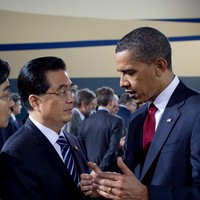Editor's note: This will be the final appearance of Thomas P.M. Barnett's "The New Rules" column at World Politics Review. We'd like to take this opportunity to thank Tom for the insightful, compelling analysis he has offered WPR readers each week for the past three years, as well as for the support he has shown for WPR over that time. We wish him continued success.
Amid all our current fears regarding the global economy’s potential “double dip” back into deep recession, a longer-term question stands out: How can a supposedly declining America protect the golden goose that is globalization while managing the rise of twin economic superpowers in the East -- namely, China and India? History says that three is a crowd when it comes to system stability. Invariably, some conflict will arise to trigger a two-against-one dynamic that must yield to either the stable stand-off of bipolarity, as during the Cold War, or the emergence through decisive conflict of an acknowledged unipolar hegemon, as in the early post-Cold War period.
The problem with such “realism” is that it cannot imagine a future world structure that precludes one or more of these superpowers from somehow “winning.” And yet, find that acceptable power-sharing formula we must, because a long-term perspective informs us that these three superpowers will share a resource codependency with as much deterrent power as the mutually assured destruction of the Cold War’s nuclear stand-off. This is the price the world pays for successfully setting in motion the rise of a truly global middle class modeled on the “American dream” but centered gravitationally in the twin behemoths China and India.

